OpIndia’s Article on ‘Yellow Journalism’ is a Work of Plagiarism
The outrage machinery went into operation soon after Kashmiri photographers, Dar Yasin, Mukhtar Khan and Channi Anand were honoured with the 2020 Pulitzer Prize in feature photography for their coverage of Kashmir. Predictably, they began discrediting the award. Right-wing propaganda website OpIndia published an article titled, “Joseph Pulitzer – the story of the founder of the Pulitzer Prizes, and the Father of Yellow Journalism” where it argued that “The “Oscar” of journalism is named after a man who arguably laid the foundation for what would be known later as “yellow journalism”, a sensationalist press that is the predecessor to today’s tabloid news and fake news phenomenon”.
Alt News found that not just the above-stated quote which forms the basis for OpIndia’s article, but the entire article is heavily plagiarised from multiple sources and infringes on copyright violation.
Plagiarism
Plagiarism or presenting someone else’s work as your own is considered “one of the primary sins of journalism”. The rules are simple – passages copied exactly from others should be put in quotation marks and attributed to the source.
The Opindia article replicates entire passages verbatim from at least two sources without crediting them. Alt News checked the article using the tool ‘Copyscape’ and found several glaring instances where entire passages were presented as their own work.
1. Vintage News
OpIndia has copied verbatim 135 words or 13% of the text from the website, Vintage News.

Shockingly, this includes the quote – “The “Oscar” of journalism is named after a man who arguably laid the foundation for what would be known later as “yellow journalism”, a sensationalist press that is the predecessor to today’s tabloid news and fake news phenomenon” – that is used in OpIndia’s tweet as well as the subheading of the article.
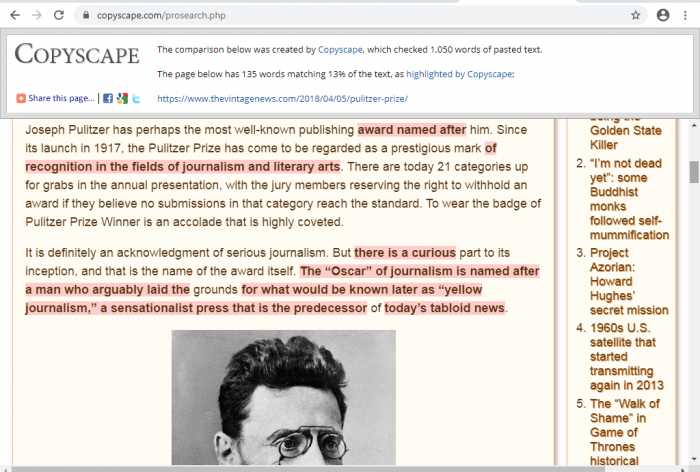
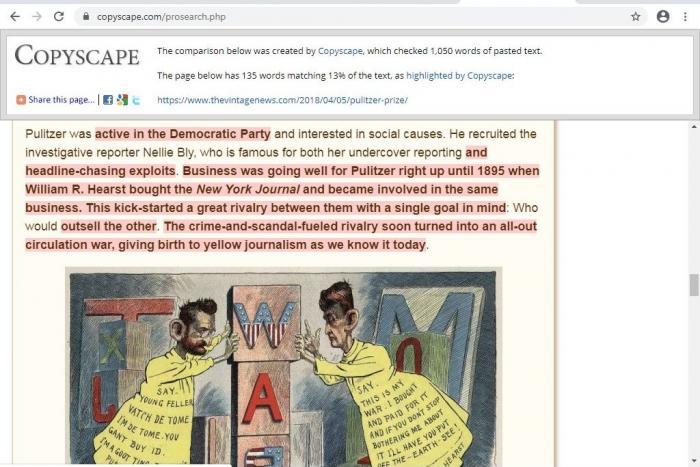
Below is a screenshot of the portions directly copied from Vintage News.
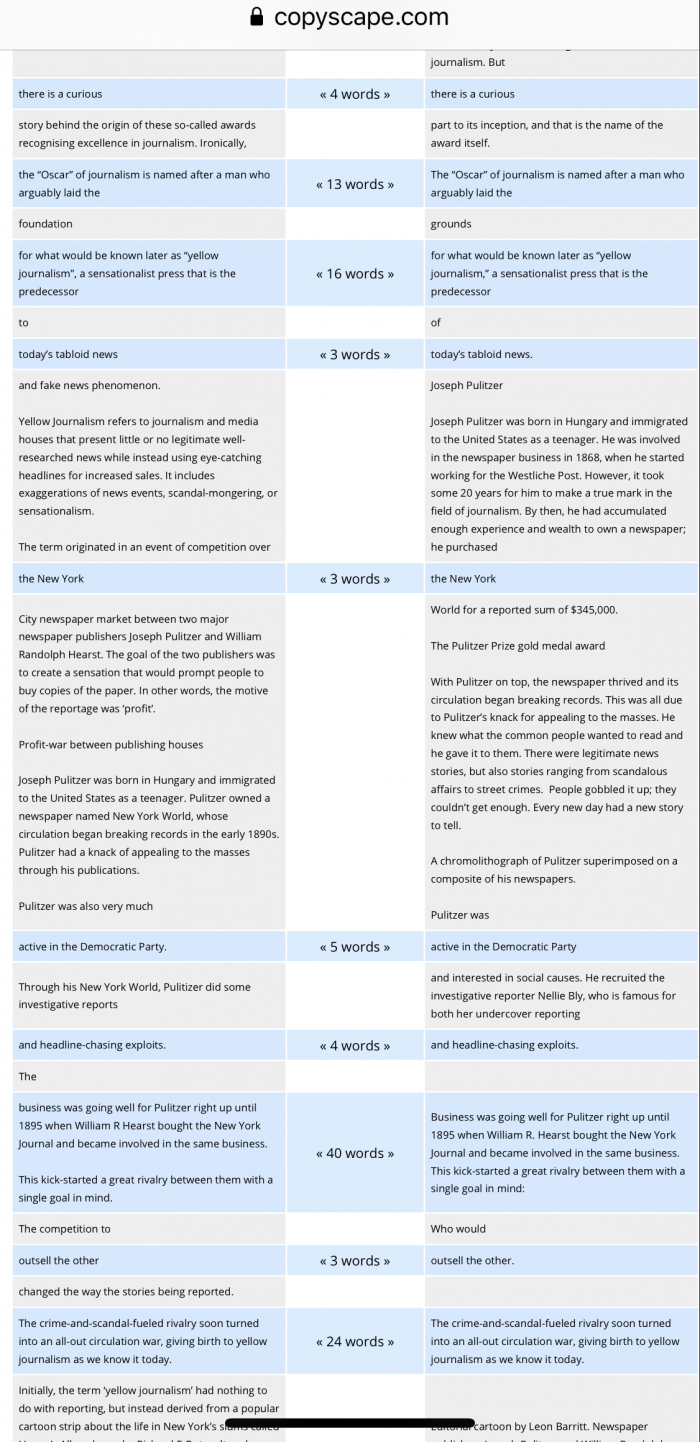
2. US State Department
42% of the text, i.e., 436 words out of the 1050 word article were copied from a single source, which is the US Department of state archive.

The same content is also available on the Department of State, Office of the Historian website. OpIndia has copied entire passages without using quotation marks.
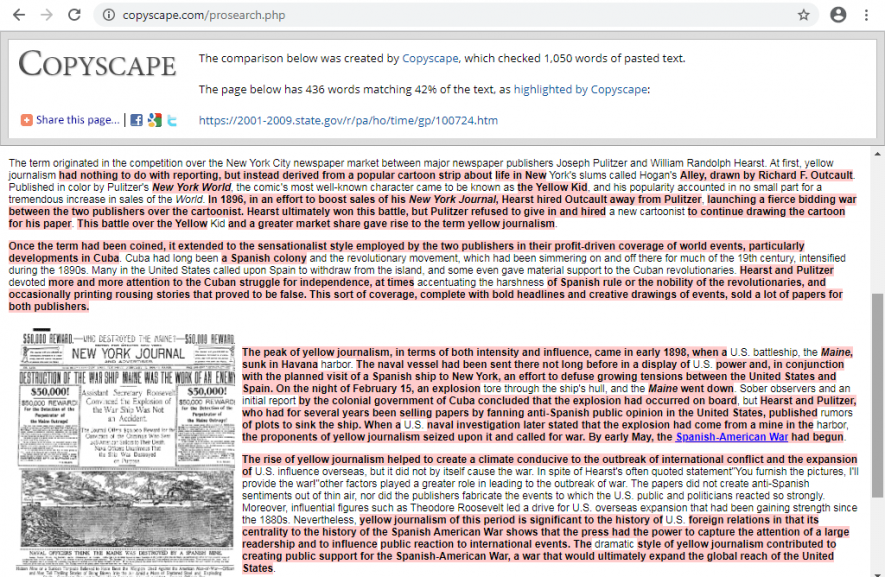
A side-by-side comparison of the two texts shows the full extent of the similarity. (Note: This is only an extract of the 436 similarities)
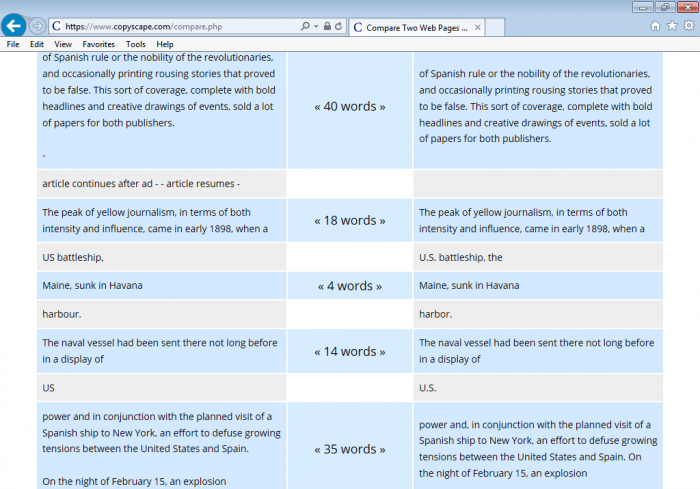
Instead of crediting the original source i.e. the US State Department, from which 42% of the text is copied, OpIndia credits History.com website of A&E Networks which has 149 words or 14% matching text, also sourced from the State Department.
Copyright violation
The terms of service of Vintage News clearly states that all content on the website is protected by copyright.

The copyright information on the US State Department reads, “Unless a copyright is indicated, information on the State Department’s main website is in the public domain and may be copied and distributed without permission. Citation of the US State Department as source of the information is appreciated.”
It must be pointed out that while there is no legal requirement to give credit to content that is sourced from the public domain, content from public domain if passed off as own piece of work, still falls under the definition of plagiarism. As explained in Stanford Copyright and Fair use guidelines, “When copying works from the public domain, be careful to avoid plagiarism. Plagiarism occurs when someone poses as the originator of words he did not write, ideas he did not conceive, or facts he did not discover.”
It is ironical that an article written to criticize the Pulitzer prize and point out its origins in sensationalist yellow journalism turns out to be heavily plagiarized. Nearly half of the article is identical to the US Department of State open-source content but is not credited. The main argument of OpIndia’s piece, which is also the subheading, is lifted from another website. With random bits replicated in entirety from internet sources, this is an example of ‘copy-paste journalism’ at its worst. Numerous plagiarism detection tools are available on the internet yet, copied content makes its way to published articles. In the past Alt News had found shocking instances of plagiarism in the publications of a premier right-wing think tank, India Foundation.
Get the latest reports & analysis with people's perspective on Protests, movements & deep analytical videos, discussions of the current affairs in your Telegram app. Subscribe to NewsClick's Telegram channel & get Real-Time updates on stories, as they get published on our website.























